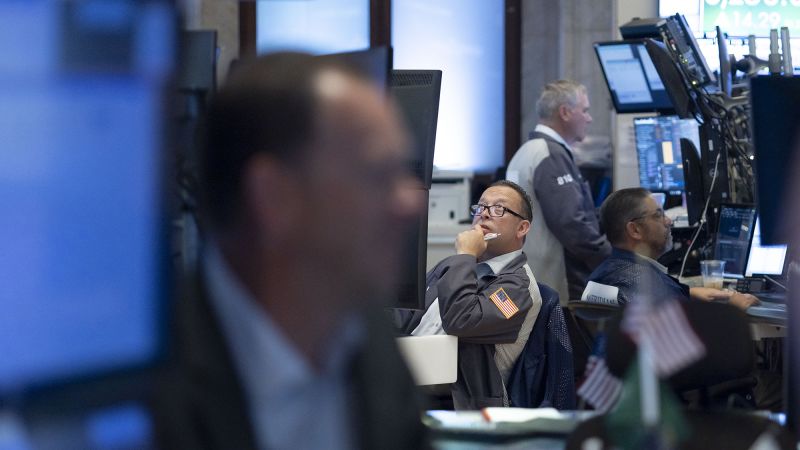On Friday, the Dow Jones Industrial Average (DJIA) showed signs of continued optimism, gearing towards potentially achieving its first record high of the year. Despite underlying turbulence within the broader economy, Wall Street remained buoyant as investors navigated through emerging market conditions and corporate reports. The optimism was palpable as traders analyzed both current performance and projections in the wake of fluctuating economic indicators.
In the morning hours of trading, stock futures presented a mixed array of movements. The DJIA futures noted a significant uptick, rising 290 points or 0.62%. In contrast, S&P 500 futures managed slight gains of 0.1%, while the Nasdaq Composite futures fell marginally, registering a decline of 0.1%. This mixture highlighted the disparate momentum across the different sectors of the market.
One major contributor to the surge in Dow futures was the notable performance of UnitedHealth Group Incorporated (UNH), a substantial component of the DJIA. The stock jumped an impressive 12.6% in premarket trading after Berkshire Hathaway (BRK.B) disclosed its stake in the healthcare titan, adding substantial investor confidence. However, UnitedHealth’s performance remained concerning overall, with its shares down 46% year-to-date.
While the S&P 500 and Nasdaq had achieved 18 and 19 record highs respectively in 2023, the Dow was still striving for its record since December 4. Speculations surrounding a potential interest rate cut by the Federal Reserve next month had positively influenced stock prices over recent weeks, inciting hopes for investor gains throughout the summer season.
For the Dow to reach a new intraday record, it needed a gain of roughly 163 points, equivalent to 0.36%. Meanwhile, to close at a record high, it needed to finish the trading session with an increase of at least 103 points, or 0.23%. Given its remarkable turnaround, which saw the index surge nearly 20% since a low point in early April, many traders remained cautiously optimistic about the month ahead.
Recent trends indicated that the DJIA has repeatedly flirted with record highs, partially bolstered by investor sentiment that has been trying to overlook concerns raised by ongoing trade tariffs put forth during President Donald Trump’s administration. While these tariffs have shown signs of elevating certain commodity prices, the overarching sentiment remained focused on corporate earnings and investor enthusiasm surrounding advancements in artificial intelligence.
The market saw a significant boost earlier in the week when Consumer Price Index data for July indicated that annual inflation matched expectations, easing concerns about a runaway inflation scenario and supporting arguments for a Federal Reserve rate cut in September. The DJIA soared a notable 947 points or approximately 2.15% over two days when the S&P 500 and Nasdaq both simultaneously achieved record highs.
However, optimism waned briefly on Thursday when Producer Price Index data for July revealed a rise in wholesale inflation, observed at its fastest monthly increase in three years. This unexpected data altered perceptions regarding the Federal Reserve’s potential actions in September, leading to a temporary decline in stock prices, although many investors quickly regrouped in the afternoon.
As traders reacted to the shifting economic landscape, equity prices began to stabilize, with the market’s volatility indicator, the CBOE Volatility Index, reaching its year’s historic low. This can be attributed to recent positive earnings reports contributing to a sense of stability in the market, alongside predictions of a possible Federal Reserve cutting cycle in interest rates.
Looking back on the year, the stock market traversed considerable fluctuations, with the DJIA plummeting 16% from its previous peak in December to early April. The index was on track for its worst April drop since the Great Depression before shifting trajectories due to Trump’s tariffs being temporarily paused. Following this event, both the S&P 500 and Nasdaq indices reached considerable highs in June, further reflecting the robustness of corporate earnings.
Despite underperforming stocks, like UnitedHealth, Salesforce (CRM), Merck (MRK), and Apple (AAPL), which reported declines ranging from 7% to 46% this year, key players such as Nvidia (NVDA), Boeing (BA), Goldman Sachs (GS), and 3M Company (MMM) demonstrated substantial gains, thus providing balance to the Dow’s performance.
The Dow, officially known as the Dow Jones Industrial Average, has been a fixture in the U.S. stock market since its inception in 1896. Originally comprising just 12 companies, it has grown to encompass 30 companies, representing the evolving landscape of the American economy over the years.
While the S&P 500 monitors a broader spectrum of 500 companies and offers a more comprehensive market outlook, the Dow remains a symbol of American financial prowess, historically renowned for its longevity and the cultural significance it holds across financial communities. Recently, global markets have also displayed strength, with Japan’s Nikkei 225 attaining an all-time high, suggesting that enthusiasm for equities is not confined to the U.S. alone












